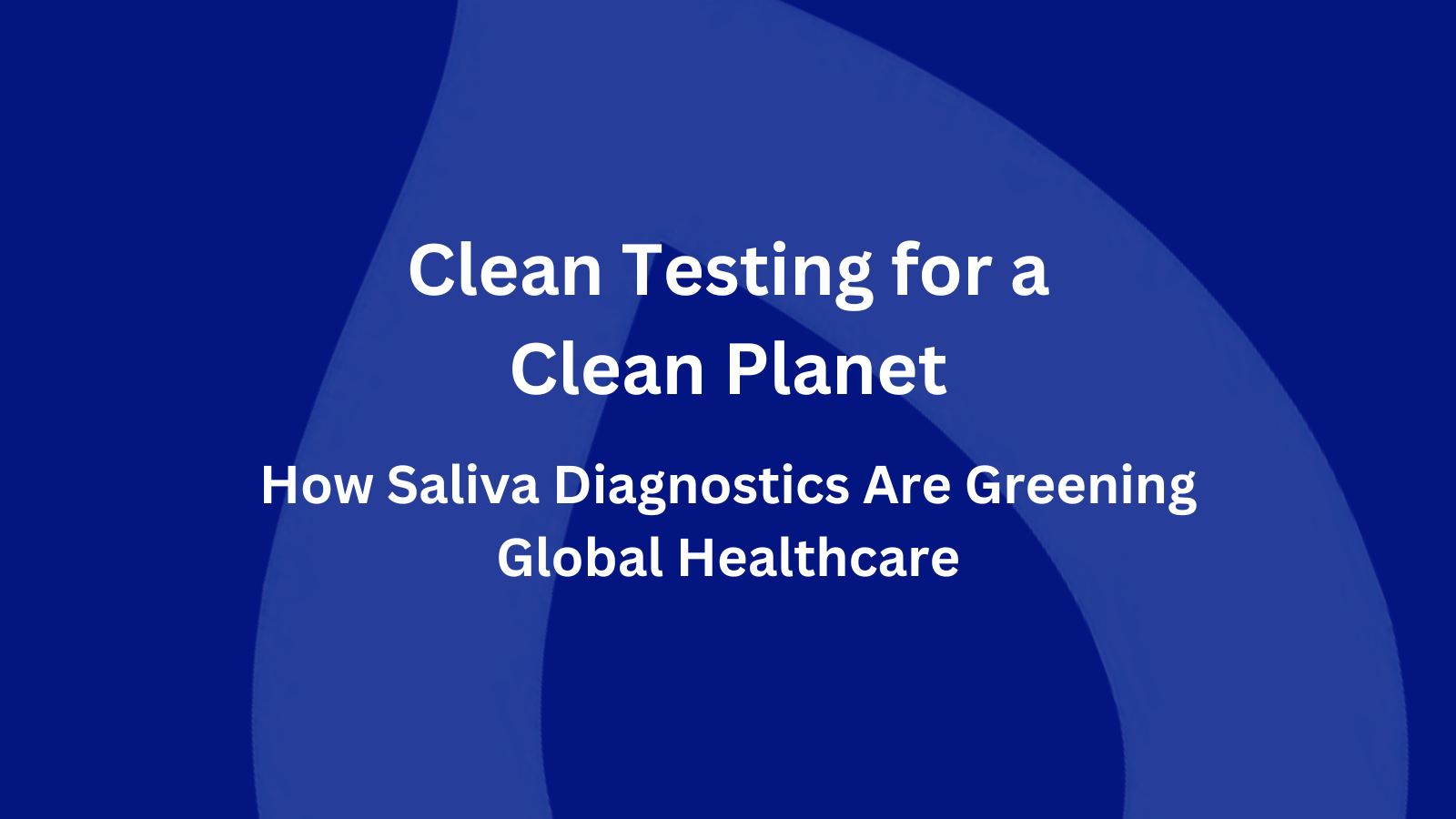How Saliva Diagnostics Reduces Waste and Environmental Impact
As the world grapples with the environmental consequences of healthcare, the push for sustainable solutions has never been more urgent. Medical waste, particularly from diagnostic testing, poses a significant challenge—from single-use plastics and sharps to hazardous materials that require careful disposal.
Saliva-based diagnostics are emerging as a powerful ally in the quest for a circular healthcare economy, offering a pathway to reduce waste, lower carbon footprints, and promote greener health systems without compromising diagnostic accuracy.
The Environmental Toll of Traditional Diagnostics
Traditional diagnostic methods, especially blood-based testing, generate a considerable amount of waste. Needles, syringes, collection tubes, alcohol swabs, and gloves are all single-use items that contribute to the growing mountain of medical refuse. In addition, the disposal of sharps and hazardous materials requires specialized handling and incineration, which not only increases costs but also releases harmful emissions into the environment.
In low-resource settings, the lack of adequate waste management infrastructure can lead to unsafe disposal practices, putting both people and ecosystems at risk. Even in high-income countries, the environmental impact of healthcare waste is drawing increased scrutiny as hospitals and clinics look for ways to reduce their ecological footprint.
Saliva Diagnostics: A Greener Approach
Saliva-based diagnostics offer a fundamentally different approach—one that aligns with the principles of the circular economy. Collection is non-invasive and does not require needles or other sharps, immediately eliminating a major source of hazardous waste.
Many saliva collection devices are designed for minimal material use and can be manufactured from recyclable or biodegradable plastics, further reducing their environmental impact.
The stability of saliva at room temperature means that samples can often be transported and stored without the need for energy-intensive refrigeration or cold chain logistics. This not only saves resources but also cuts down on emissions associated with the transport and storage of medical samples.
Saliva testing’s simplicity and efficiency make it an ideal candidate for sustainable mass screening programs, particularly in settings where waste management is a challenge.
Reducing Single-Use Plastics and Biohazard Waste
The shift from blood-based to saliva-based testing can have a dramatic effect on the volume and type of waste generated. Saliva collection typically involves a single tube or swab, without the need for additional consumables like tourniquets, gauze, or vials. The absence of blood also means that saliva samples are less likely to be classified as hazardous, simplifying disposal and reducing the risk of environmental contamination.
Innovations in saliva collection technology are pushing sustainability even further. Some companies are developing reusable or compostable collection devices, while others are exploring the use of plant-based plastics and other eco-friendly materials.
These advancements are helping to close the loop, ensuring that diagnostic testing supports both human and planetary health.
Energy Efficiency and Carbon Reduction
Beyond waste reduction, saliva diagnostics offer significant energy savings. The ability to store and transport samples at ambient temperatures eliminates the need for refrigerated trucks, freezers, and temperature-controlled storage facilities. This is particularly important in large-scale screening programs, where thousands of samples may need to be processed and analyzed.
By minimizing the energy requirements of diagnostic testing, saliva-based approaches contribute to lower carbon emissions and a smaller environmental footprint. This aligns with global efforts to decarbonize healthcare and transition to more sustainable models of care.
Supporting Circular Health Systems
The principles of the circular economy—reduce, reuse, recycle—are increasingly being applied to healthcare. Saliva diagnostics fit seamlessly into this framework by reducing the need for single-use materials, enabling the use of recyclable or compostable products, and simplifying waste management.
They also support the decentralization of care, allowing for more testing to take place outside of traditional healthcare facilities and reducing the environmental impact of patient travel. These innovations are not only good for the environment but also for public health, making diagnostics more accessible and affordable for all.
A Sustainable Future for Diagnostics
The transition to saliva-based diagnostics represents a win-win for healthcare and the environment. By reducing waste, conserving energy, and supporting the principles of the circular economy, saliva testing is setting a new standard for sustainable diagnostics.
As healthcare systems around the world strive to balance quality care with environmental stewardship, saliva-based approaches are poised to play a leading role in building a healthier, greener future.


